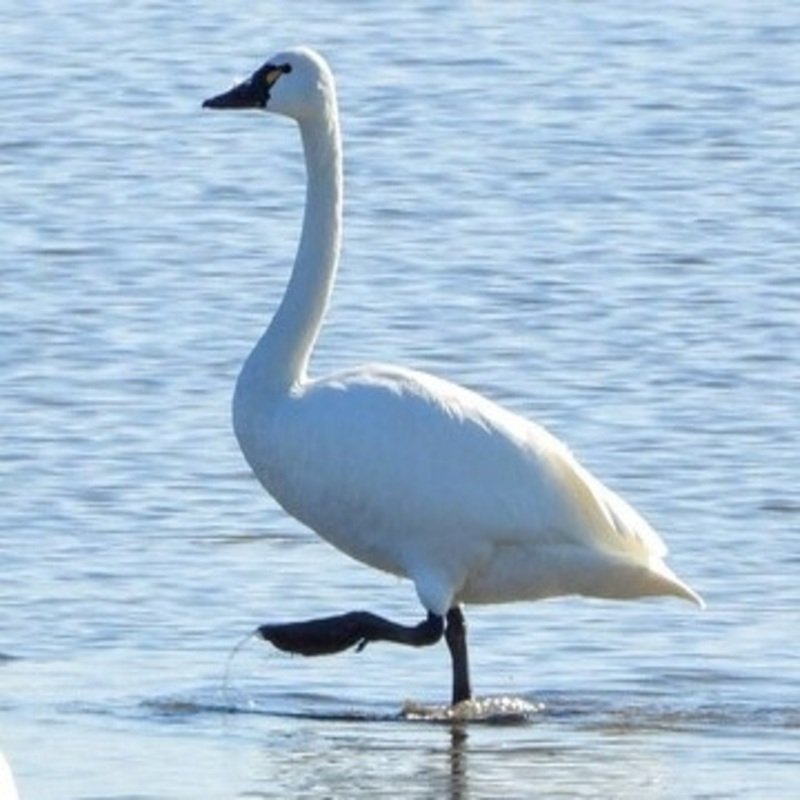The tundra swan (Cygnus columbianus) is a tiny swan found in the northern hemisphere. Although the two taxa within it are normally considered conspecific, they are occasionally divided into two species: Bewick’s swan (Cygnus bewickii) in the Palaearctic and whistling swan (C. columbianus) of the Nearctic proper.
Quick Overview: Cygnus Columbianus – Tundra Swan
Body size: Around 47-58 in (119-147 cm) and weight of 10496 g (370.37)
Main colors: White, Black, Yellow
Range: Western United States
Migratory Bird: Yes
Best time of the year to see in the U.S.: March, April, May, September, October, November
Conservation Status: Least Concern
Tundra Swan Description
Their feathers are entirely white, but their bills are completely black. Individuals in some places have a big yellow segment at the base of their bills, while others have only a single yellow spot. While these birds are smaller than some other swans, they are still rather huge.

Size
These birds have a length of 47-58 in (119-147 cm) and weight of 10496 g (370.37 oz). Their wings could range from 72-84 in (183-213 cm).
Feeding
Tundra swans are herbivores, consuming a variety of vegetation such as grasses, sedges, and smartweed.
Habitat
The tundra swan breeds in the tundra of the Arctic and subarctic, where they occupy shallow pools, lakes, and rivers, as its common name implies.
Behavior
Tundra swans spend their winters on the water, sleeping afloat. They are strong and swift swimmers who rise to the air with a running start, clattering across the surface of the water with their wings pounding. When the swan is flying, the repetitive flapping of its wings makes a tone that earned it the nickname “whistling swan.”
Cygnus Columbianus Scientific Classification
- Kingdom: Animalia
- Phylum: Chordata
- Subphylum: Chelicerata
- Class: Aves
- Order: Anseriformes
- Family: Anatidae
- Genus: Cygnus
- Species: Cygnus columbianus
Best time of the year to see
In the United States, the best time of year to see these birds are during the Spring season (March-May) and during the Autumn season (September – November).
Distribution of the Tundra Swan in the USA
Breeds in Alaska and far northern Canada, from Baffin Island to the Bering Sea. Winters from southern Alaska to Nevada, Utah, and Baja California, as well as along the mid-Atlantic coast; uncommon on the Texas Gulf coast and occasionally on the Great Lakes.
The Tundra Swan can be found in the following states in the United States – Arizona, Arkansas, Colorado, Connecticut, Delaware, Hawaii, Idaho, Illinois, Indiana, Iowa, Kansas, Maine, Maryland, Massachusetts, Michigan, Minnesota, Missouri, Montana, New Hampshire, New Jersey, New Mexico, New York, North Carolina, North Dakota, Ohio, Oklahoma, Oregon, Pennsylvania, Rhode Island, South Carolina, South Dakota, Vermont, Virginia, Washington, West Virginia, and Wisconsin.

